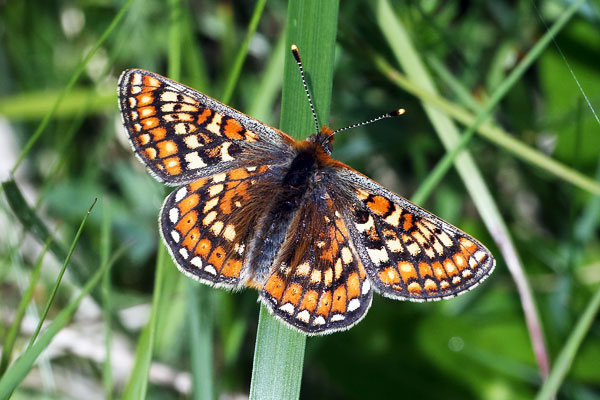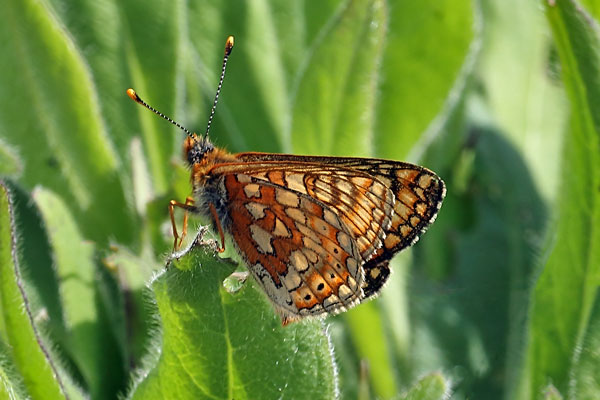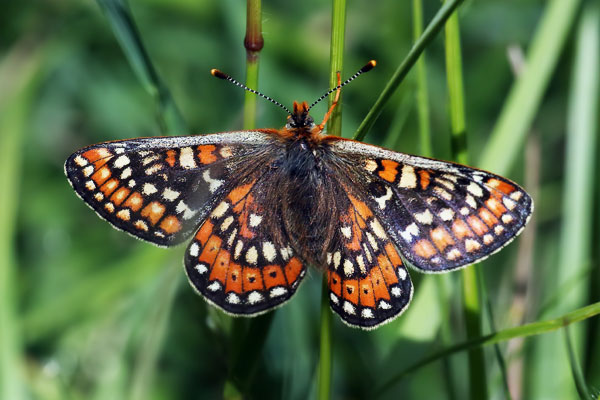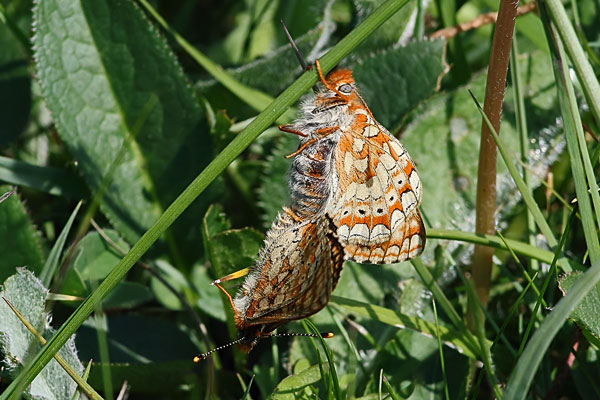Marsh Fritillary (Euphydryas aurinia) | Species | ||||||||||||||||||||||||||||||||||||||||||||||||||||||||||||||||||||||||||||||||||||||||||||||||||||||||||||||||||||||||||||||||
 Male. Taken at The Coombes, Wilts, on May 19th 2022. (© David Hastings) (1/1000th sec at f11)  Male underside. Taken at Cholsey, Oxon., on May 9th 2020 (© David Hastings) (1/200th sec at f13)  Female. Taken at The Coombes, Wilts, on May 19th 2022. (© David Hastings) (1/1000th sec at f11)  Mating pair. Taken at Pewsey Downs, Wilts, on May 20th 2018. (© David Hastings) (1/500th sec at f13) DescriptionFamily: Heliconiinae Wing span: 35-40 mm The Marsh Fritillary is the most colourfully marked British fritillary, featuring a highly variable chequered pattern of orange, brown and yellow markings. These gradually fade, leaving the butterfly with a shiny appearance. This butterfly is found primarily in western Scotland, western England and throughout Wales. It is also found in many parts of Ireland. It exists in several different types of habitat, including chalk hillsides, heathland, moorland and damp meadows. A factor common to all habitats is that they are in full sun - this aids larval development. Adults emerge in the middle of May, reaching a peak in early June. Adults in northern Scotland emerge slightly later. There is one generation each year. The larva is the over-wintering stage. Colonies of this butterfly are known to fluctuate wildly in numbers. It may be present in some numbers one year, for the population to crash the following year before recovering as unexpectedly. This species does not do well in adverse weather conditions and also suffers greatly from larval parasitism by an Apanteles species of wasp. The main larval foodplant is Devil's-bit Scabious. Field Scabious and Small Scabious are also used. Adults feed primarily on Betony, Bugle, Buttercups, Cuckooflower, Dandelion, Hawkweeds, Knapweeds, Ragged Robin, Thistles and Tormentil. Males emerge a few days before the females and set up small territories centred on a particular plant or flower. They will dart up to investigate any passing butterfly. They will also patrol suitable areas, in the hope of finding a newly-emerged female. Once a female is found, the male flutters around her for a short while before mating takes place. Vulnerable Earliest UK sighting: 9th May ; Latest UK sighting: 9th June Sightings
| |||||||||||||||||||||||||||||||||||||||||||||||||||||||||||||||||||||||||||||||||||||||||||||||||||||||||||||||||||||||||||||||||

